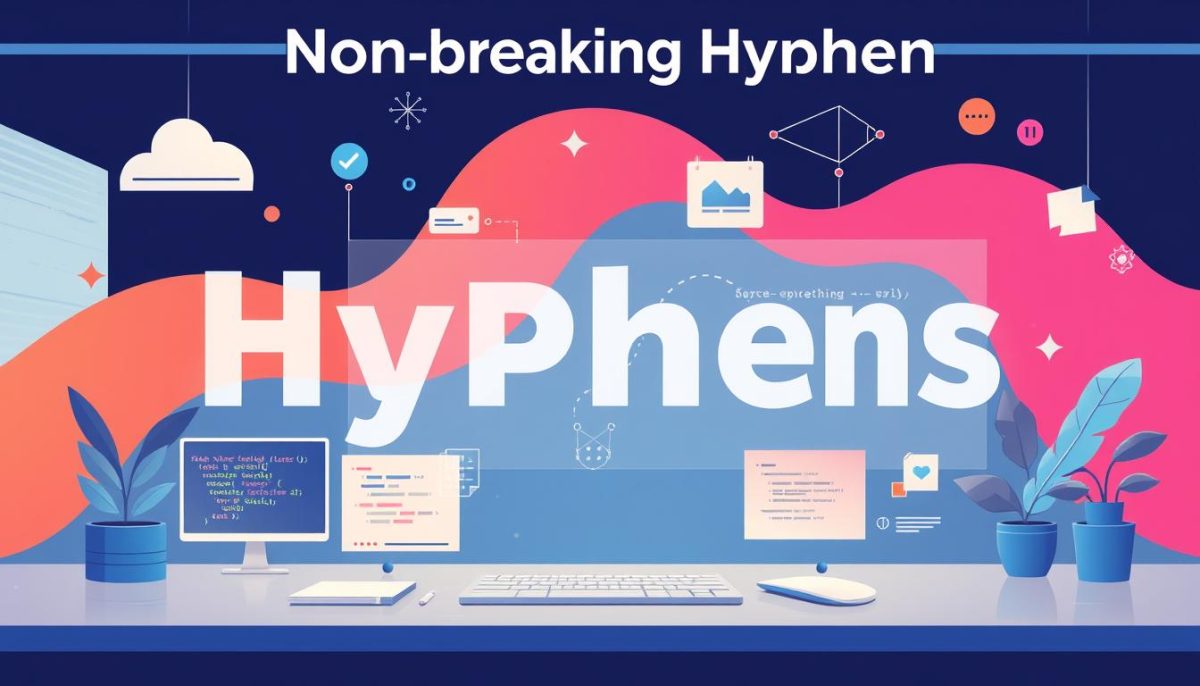In our journey towards improving web design, we often encounter various tools and techniques that can enhance the presentation of text on our websites. One such tool is the HTML non-breaking hyphen. This special character plays a vital role in ensuring that hyphenated terms remain intact, preventing unwanted line breaks that can disrupt readability. By mastering non-breaking hyphen usage, we can significantly improve the overall web design formatting of our content.
Understanding the importance of this HTML entity is not just beneficial for developers; it affects how users engage with our content. As we delve deeper, we will explore the mechanics of implementing non-breaking hyphens in our coding practices, enhancing both the appearance and user experience of our web pages.
The Importance of Non-Breaking Hyphe in Web Design
In web design, ensuring the smooth flow of text is essential. Utilizing non-breaking hyphens can significantly enhance both text flow and readability. When we incorporate these hyphens, we prevent disruptive line breaks from occurring in phrases that need to remain together. This approach ultimately creates a more cohesive reading experience for visitors.
Understanding Text Flow and Readability
Effective web content hinges on its readability. Studies indicate that maintaining a clear layout with appropriate formatting helps keep users engaged. By implementing non-breaking hyphens, we can achieve better formatting that allows crucial terms to stay linked. This practice not only increases overall text flow but also contributes to a more organized appearance. Consequently, fostering a positive impression on readers becomes achievable.
Enhancing User Experience with Non-Breaking Hyphe
When it comes to user experience design, the benefits of non-breaking hyphens cannot be overstated. With these characters, we present our content in a structured manner that resonates with our audience. A well-formatted webpage equipped with non-breaking hyphen benefits reduces confusion and frustration during reading. Ultimately, this leads to a more memorable interaction with our content, encouraging users to explore further.

Mastering the HTML Non-Breaking Hyphe
Understanding the fundamentals becomes crucial when working with effective web design. To define non-breaking hyphen, we recognize that it is a character used to keep related words together on a single line. This functionality enhances text readability and prevents awkward breaks in our content.
What is a Non-Breaking Hyphe?
A non-breaking hyphen differs from a regular hyphen primarily in its behavior within text. While a standard hyphen allows for breaks in lines, a non-breaking hyphen keeps the associated elements intact. This is particularly useful in compound words or phrases, ensuring that important connections remain visible. In HTML, we can represent this character using `‐`, which blends seamlessly with our HTML coding practices.
How to Implement Non-Breaking Hyphe in Your Code
Implementing non-breaking hyphens effectively requires careful coding. By following some straightforward steps, we can enhance the overall structure of our content:
- Edit the HTML markup by replacing regular hyphens with the non-breaking equivalent `‐.
- Utilize CSS properties when necessary to further control text layout and ensure fluidity.
- Consider JavaScript for dynamic content management that may require non-breaking hyphens.
Here’s an overview of potential HTML structures versus their non-breaking counterparts:
| Standard HTML | With Non-Breaking Hyphen |
|---|---|
| This is a well-known brand-name example. | This is a well‐known brand‐name example. |
| Ceiling-fan market growth is significant. | Ceiling‐fan market growth is significant. |

Common Mistakes to Avoid
When implementing non-breaking hyphens, we often encounter several pitfalls that can negatively impact our HTML coding quality. One primary concern is the overuse of non-breaking hyphens, which tends to create awkward sentence structures. Striking the right balance is essential; too many of these characters can confuse readers and disrupt the natural flow of text. Web design pitfalls such as this can undermine our efforts to create a polished and enjoyable user experience.
Moreover, we must be cautious not to mix non-breaking hyphens with regular hyphens. This confusion can lead to non-breaking hyphen errors, causing ambiguity in meaning. Whether we’re discussing word compounds or specific terminology, clarity should always be our top priority. We should regularly review our choice of hyphenation to ensure it aligns with best practices from credible resources like WebAIM, which emphasizes the importance of accessibility in web design.
Lastly, let’s remember that simplicity and functionality should guide our design choices. We can rely on insights from platforms like CSS Tricks and A List Apart to help refine our understanding of text formatting in web environments. By avoiding these common mistakes, we can enhance both the aesthetic appeal and functional readability of our web content, ensuring an effective communication strategy with our audience.

